
A pile of shopping lists made from printer's cast-offs
This is the quickest and easiest way of joining together a pile of papers. I would only use it for unimportant pads ~ notebooks ~ shopping lists ~ any similar item where the pages are to be held in one place, but can be removed easily when not in use. Careful single fanning [116119] or double fanning [116087] makes a more secure booklet.
Shopping lists tend to have tear-off sheets, and so lend themselves to this style of binding. We find that they are a useful way of using-up any scrap piles of papers that accumulate in a busy printer's workshop. We are fortunate to have an occasional supply of such offcuts from a local printer's guillotine. The pictures, below, show a bundle of otherwise waste slips being made into notepads. We then give them away to anyone who appreciates such upcycling.

Although simple in concept there are several techniques for this type of padding that lead to better results if they are followed. I illustrate the way I undertook the task recently.
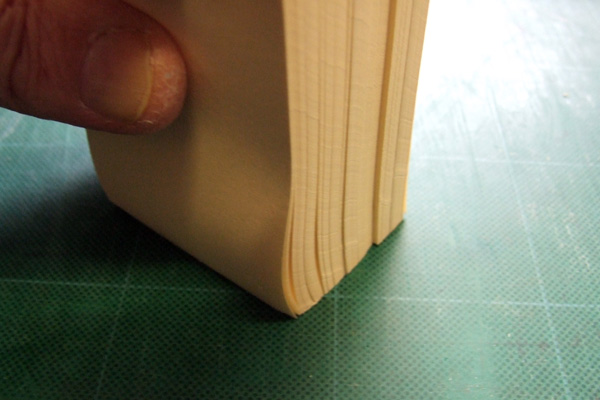

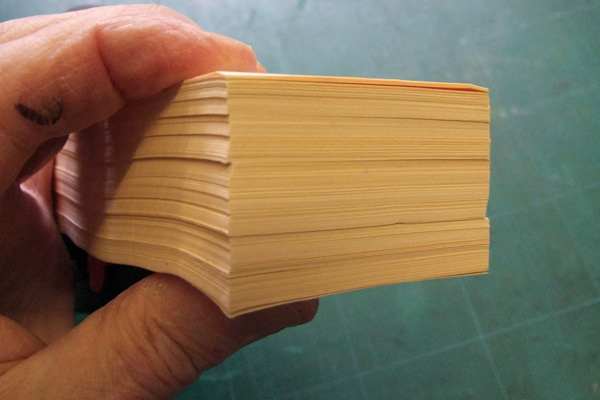
Squaring ~ it makes for a neater finished job if all the sheets in the pile are squared-up in all directions.
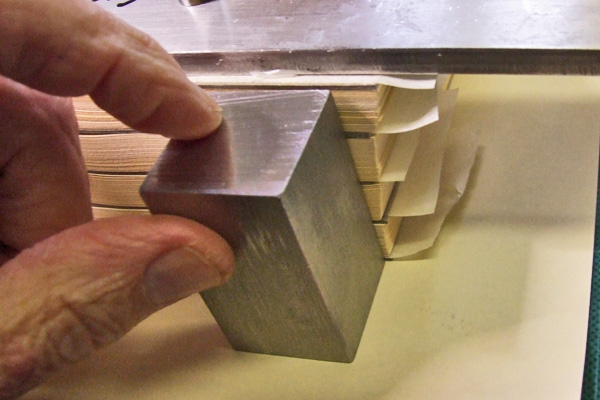

The choice of glue is important. With no-fan gluing the sheets are only held together by glue on their edges. If it does not penetrate into the sheet it will not have much area against which to grip (that is why fanning can be very important). Dry glues, such as glue stick, may give a weak result. PVA, with a little dilution with water or paste, is useful. Paste on its own has little strength in itself, which is another important factor with this type of gluing. I find EVA is more flexible, when dry, than PVA, and seems equally ~ or more ~ strong. Some PVAs are designed to dry hard (eg woodworking PVA). Their brittleness may lead to the pad cracking into chunks as soon as it used.
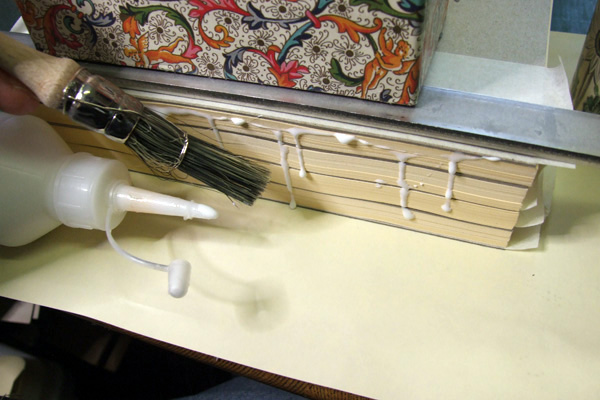
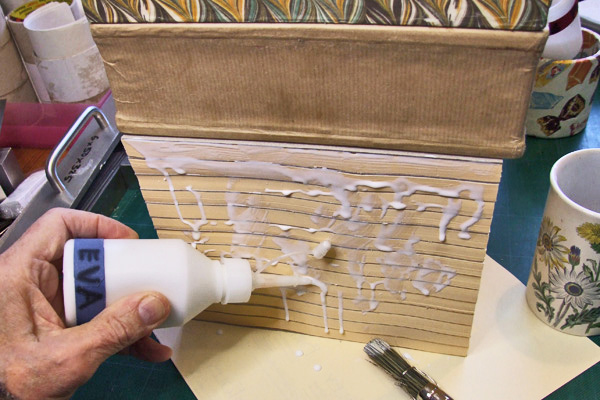
Here I am using EVA [126417]. EVA remains runny enough to allow several minutes for brushing and smoothing out. It will also penetrate further into the fibres than thicker glues. (I have put the brush down in order to take the photograph.) It helps to brush-out the glue as soon as it is applied. If allowed to dry too much then it will not be able to penetrate well. Brushes are a pain to clean. I used one here for example. In practice I used a scrap of card ~ or a business card ~ which can be thrown out ~ or an old credit card ~ which does need cleaning. The pile is being well squashed down by two heavy bricks
Invariably when padding you will find, however careful you are, that some glue will creep onto top and bottom sheets. Allow for these sheets to be torn off. I normally allow a sheet at the bottom and two at the top. If they are not damaged by excess gluing then they become a bonus. If padding a fixed number of sheets then allow a couple at the top and bottom of the pile, and use a different colour to remind you that they need removing. This is especially important if preparing numbered invoice sets
